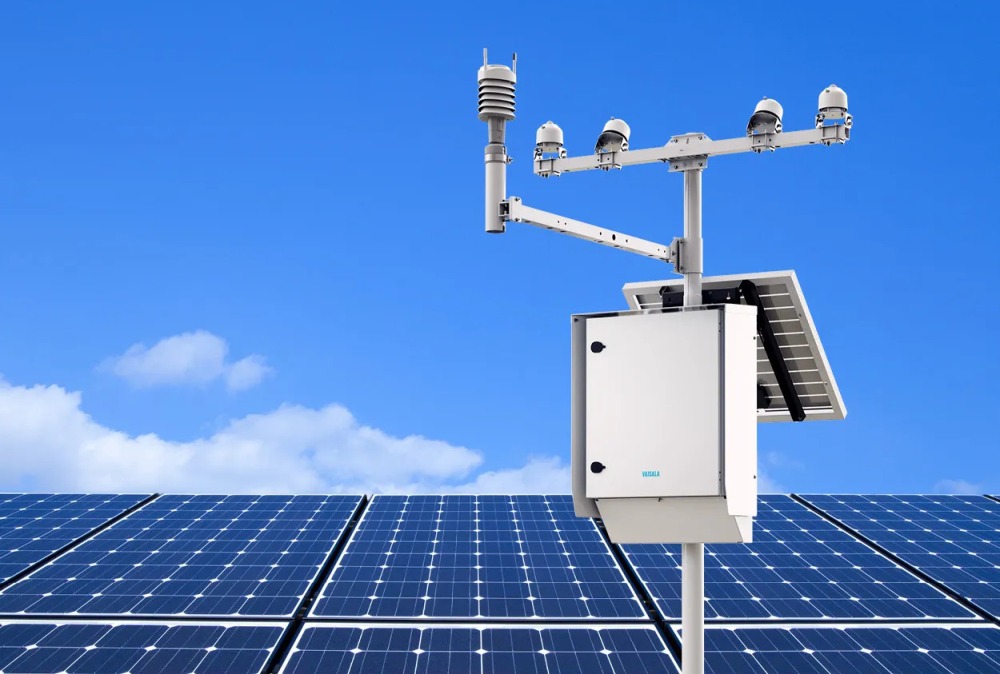
Imagine a weather station that doesn’t rely on conventional power sources but instead harnesses the abundant energy of the sun. Enter the world of solar-powered weather stations, where innovation meets sustainability. In this article, we delve into the fascinating realm of solar-powered weather stations, exploring their functionality, benefits, and significance in today’s world.
Understanding Solar-Powered Weather Station
What are Solar-Powered Weather Stations?
Solar-powered weather stations are innovative devices equipped with various sensors to measure atmospheric conditions such as temperature, humidity, pressure, wind speed, and precipitation. What sets them apart is their reliance on solar energy to power their operations, making them environmentally friendly alternatives to traditional weather stations. They serve as beacons of sustainable technology in the field of meteorology.
How do They Work?
These stations feature solar panels that capture sunlight and convert it into electricity, which is then used to power the sensors and data transmission systems. During periods of insufficient sunlight, they can store excess energy in batteries, ensuring continuous operation even in low-light conditions. Their seamless integration of solar power and advanced sensor technology ensures reliable weather data collection day and night.
Advantages of Solar-Powered Weather Stations
Environmentally Friendly
By utilizing renewable solar energy, these stations significantly reduce carbon emissions and contribute to a cleaner, greener planet. They help mitigate climate change by minimizing dependence on fossil fuels for power generation. Solar-powered weather stations are not just instruments; they are agents of environmental stewardship, promoting sustainability in weather monitoring practices.
Cost-Effective
Once installed, solar-powered weather stations require minimal maintenance and have lower operational costs compared to traditional stations. They eliminate the need for electricity bills and reduce reliance on external power sources, resulting in long-term savings. Their cost-effectiveness makes them accessible to a wide range of users, from small-scale farmers to large meteorological institutions.
Remote Monitoring
With advancements in technology, solar-powered weather stations can transmit real-time data wirelessly, allowing users to monitor weather conditions remotely. This feature is invaluable for various applications, including agriculture, research, and disaster management. Solar-powered weather stations empower users with instant access to critical weather information, enhancing preparedness and decision-making.
Applications of Solar-Powered Weather Stations
Agriculture
Farmers rely on accurate weather data to make informed decisions regarding crop management, irrigation, and pest control. Solar-powered weather stations provide timely information on temperature, humidity, and rainfall, enabling farmers to optimize agricultural practices and increase yields sustainably. They serve as indispensable tools for modern farming, helping farmers adapt to changing weather patterns and maximize productivity.
Meteorological Research
Meteorologists use weather data from solar-powered stations to study climate patterns, predict weather events, and analyze long-term trends. These stations contribute valuable insights into climate change and its impact on ecosystems, human health, and infrastructure. Solar-powered weather stations serve as essential resources for scientific research, facilitating a deeper understanding of our planet’s dynamic climate system.
Renewable Energy
Solar-powered weather station plays a crucial role in the renewable energy sector by providing essential data for solar panel installations. They help assess the suitability of locations for solar energy generation, optimize panel orientation, and forecast solar irradiance levels for efficient energy production. Solar-powered weather stations support the growth of renewable energy technologies, driving the transition to a more sustainable energy future.
The Future of Weather Monitoring: Innovations and Trends
As technology continues to evolve, we can expect further advancements in solar-powered weather stations. From enhanced sensor capabilities to AI-driven analytics, these innovations promise to revolutionize weather monitoring and forecasting, empowering individuals and organizations with actionable insights. The future holds exciting possibilities for solar-powered weather stations, as they continue to evolve and adapt to meet the challenges of a changing climate.
Conclusion: Embracing Sustainable Solutions for a Brighter Future
Solar-powered weather stations epitomize the harmonious integration of technology and sustainability. By harnessing the power of the sun, they offer a renewable and eco-friendly approach to weather monitoring. As we embrace these innovative solutions, we take a step closer to building a more resilient and environmentally conscious society. Solar-powered weather stations are not just tools for measuring the weather; they are symbols of our commitment to preserving the planet for future generations.
FAQs (Frequently Asked Questions)
Are solar-powered weather stations reliable in areas with limited sunlight?
Yes, solar-powered weather stations are designed to operate efficiently even in areas with intermittent sunlight. They can store excess energy in batteries for use during periods of low light, ensuring continuous operation. Their reliability ensures consistent weather monitoring in diverse environmental conditions.
How long do solar-powered weather stations last?
With proper maintenance, solar-powered weather stations can last for many years. The lifespan of the components, including solar panels and batteries, varies but can range from 5 to 20 years or more. Their durability ensures long-term performance and reliability in weather monitoring applications.
Can solar-powered weather stations withstand harsh weather conditions?
Yes, solar-powered weather stations are built to withstand a range of weather conditions, including extreme temperatures, high winds, and heavy precipitation. They are often designed with durable materials and weatherproof enclosures to ensure reliable performance in challenging environments. Their robust construction ensures uninterrupted operation in adverse weather conditions.
Can solar-powered weather station be integrated with other monitoring systems?
Yes, solar-powered weather stations can be integrated with various monitoring systems, including remote telemetry units (RTUs) and data loggers. This allows for seamless data collection, analysis, and integration with existing infrastructure. Their compatibility with other systems enhances their versatility and utility in diverse applications.
Are solar-powered weather stations suitable for residential use?
Yes, solar-powered weather stations are available in a range of sizes and configurations, making them suitable for both commercial and residential applications. They can be installed in gardens, rooftops, or backyard weather stations, providing homeowners with valuable insights into local weather conditions. Their user-friendly design and easy installation make them ideal for personal weather monitoring needs.
